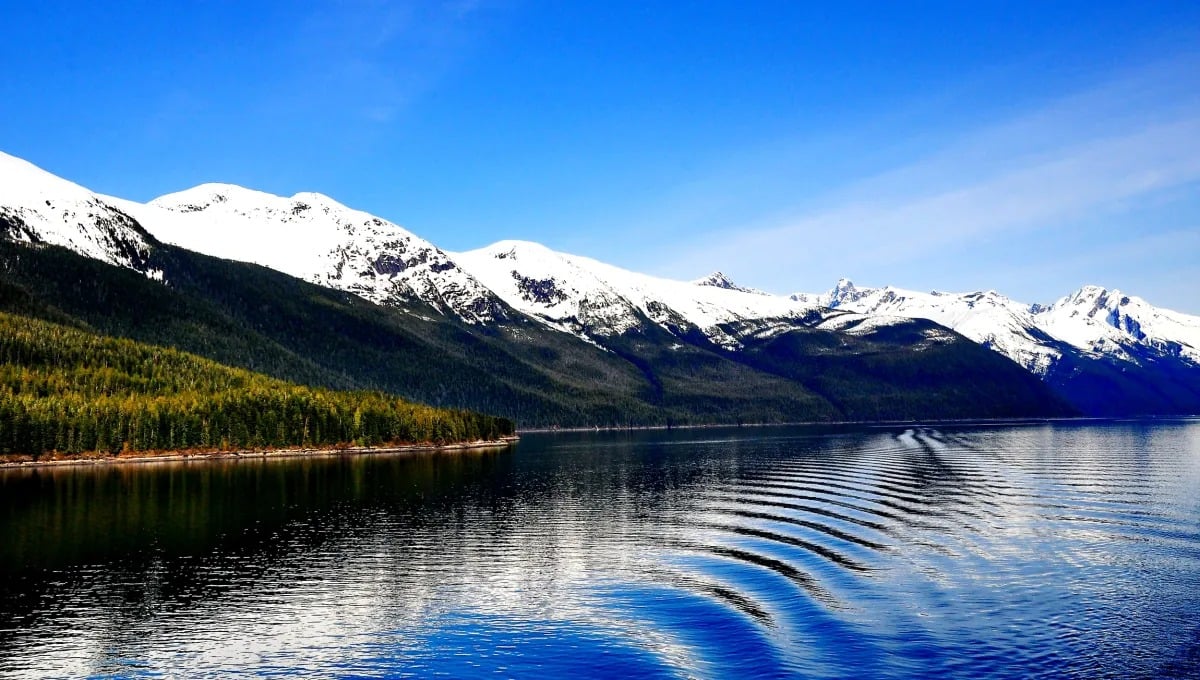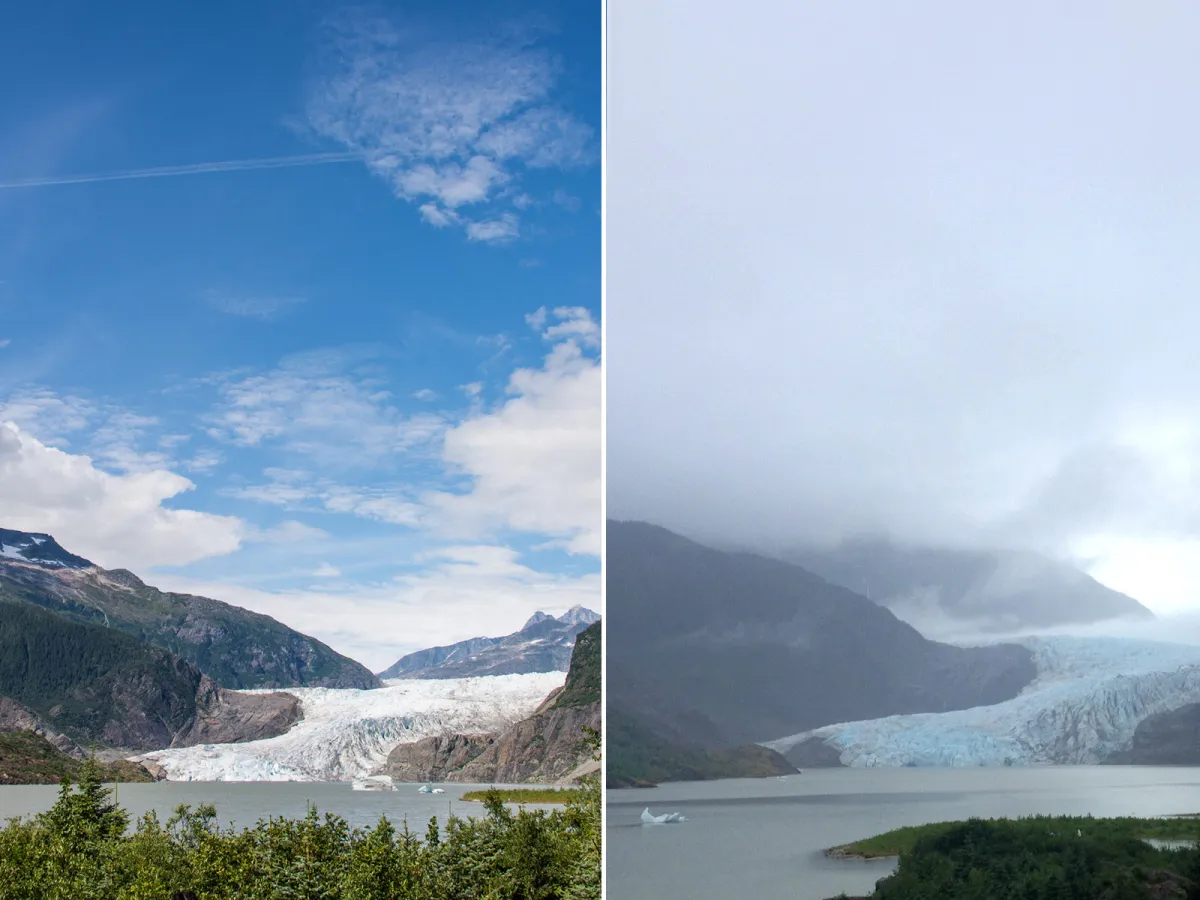
The weather in Alaska can change quickly. It can be sunny one moment, and then grey skies roll in, and it starts to rain. Cool mornings that turn into warm afternoons are common as well, with twenty-degree fluctuations during the day. This can make packing for your cruise challenging.
Rain, cold, and sun are all things you should be prepared to deal with when getting ready for an Alaska cruise. Whether it’s a day walking around in port, whale-watching, hiking on a glacier, or scouting some of Alaska's impressive wildlife, you want to have the right clothes for every occasion.
Beyond your standard cruise packing list, there are some considerations when cruising to Alaska to help you stay comfortable while spending a day in port or relaxing on deck.

Here are a few key strategies to help you stay warm and dry while on your cruise to Alaska.
Overview of weather in Alaska
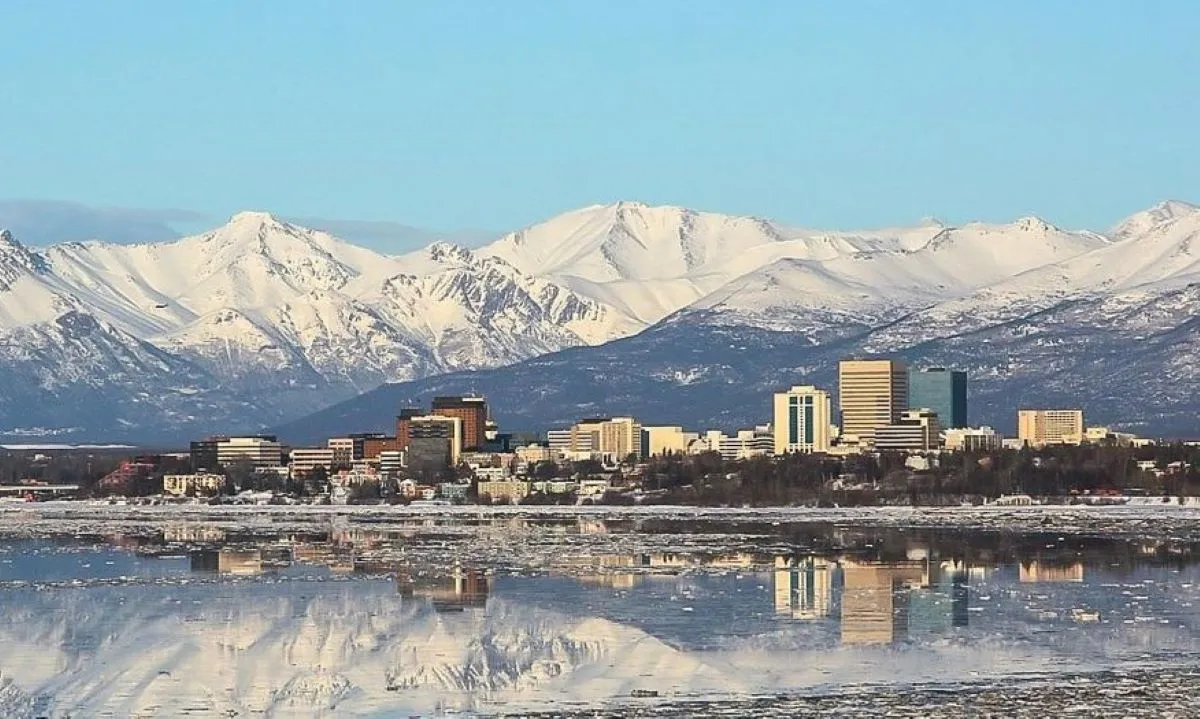
Something to consider when cruising to Alaska: spring or fall can still be chilly, with temperatures ranging from the 40s to 50s depending upon the day and which port you are visiting. Summer months see an increase in temperature to the high 60s, and as you sail farther north, the sun almost never sets. Long days see twenty-plus hours of sun, which helps to warm things up.
When sailing on a cruise to Alaska, guests need to expect rain at any time, although May and September are the months with the most rain and can see up to 20 days of precipitation. June, on the other hand, is the driest month of the season, while July and August enjoy the warmest weather.
However, Alaska is massive, covering a half million square miles. Needless to say, the weather varies significantly. If you plan to spend time in places like Anchorage, Seward, and Denali National Park, they tend to see less rain. It is recommended to have a look at the average temperature for places you are visiting but pack for a variety of scenarios.
Preparing for temperature swings during the day
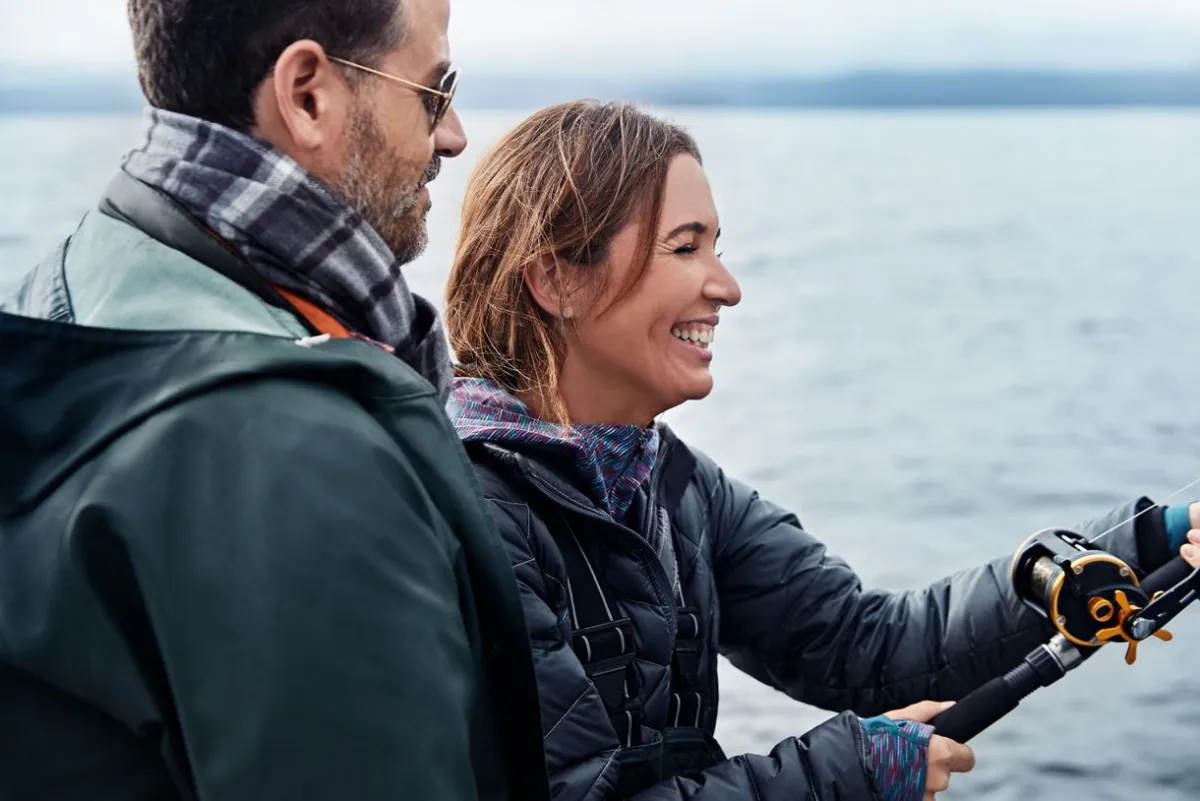
When cruising to Alaska, you should expect to see swings in temperatures from the early morning to later in the day, as much as twenty degrees. The key to dealing with the fluctuations is layering. Start with a base layer. Comfortable short and long-sleeved t-shirts are popular options; make sure to pack several for your cruise. A sweater or fleece are good choices for a middle layer, adding warmth and flexibility. Comfortable pants are crucial, especially for long excursions. Some people like convertible zip pants that can quickly transform into shorts.
Topping this off is a waterproof (or at least repellent) jacket. There is an incredible selection of lightweight, warm jackets that are perfect for a cruise to Alaska. Some jackets have linings with zippers, making them even more versatile for a range of temperatures.
When picking clothes, it is important to pick the right fabric. Natural products like cotton and wool are among the most breathable and make for a great component in layering and keeping you comfortable through the day of fun Alaska excursions. Moisture-wicking/quick-drying materials are also helpful in staying dry.
Tips for dealing with cold
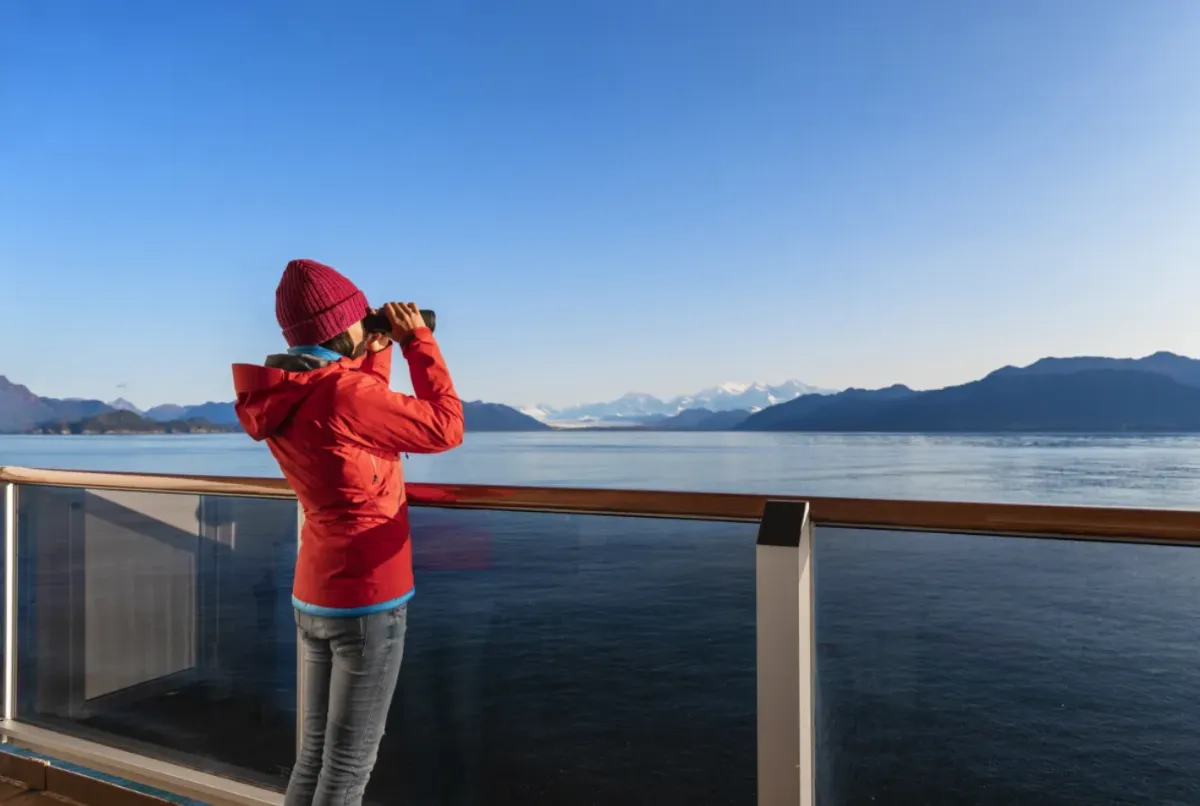
Beyond layering and a lightweight, warm jacket, hats and gloves are important parts of outerwear, especially when in cooler conditions. There are tons of options, and many are lightweight and waterproof. For colder temperatures, touchscreen gloves that allow you to still use your phone and take pictures are a great plus.
One of the biggest aspects to staying warm is the right footwear. If your feet get wet, they will feel cold, which can make for a long day. It is recommended to pack two pairs of durable waterproof shoes. Simple running/ sneakers are okay on the ship but will not be sufficient in the wet conditions you may encounter on shore.
Hand warmers, a popular item with skiers, come in individual packets that are easy to slip into a pocket. For those extra cold mornings, they provide added heat in seconds and can last hours. Add a scarf or neck warmer for another layer of protection from the cold.
Managing the rain (and bugs)
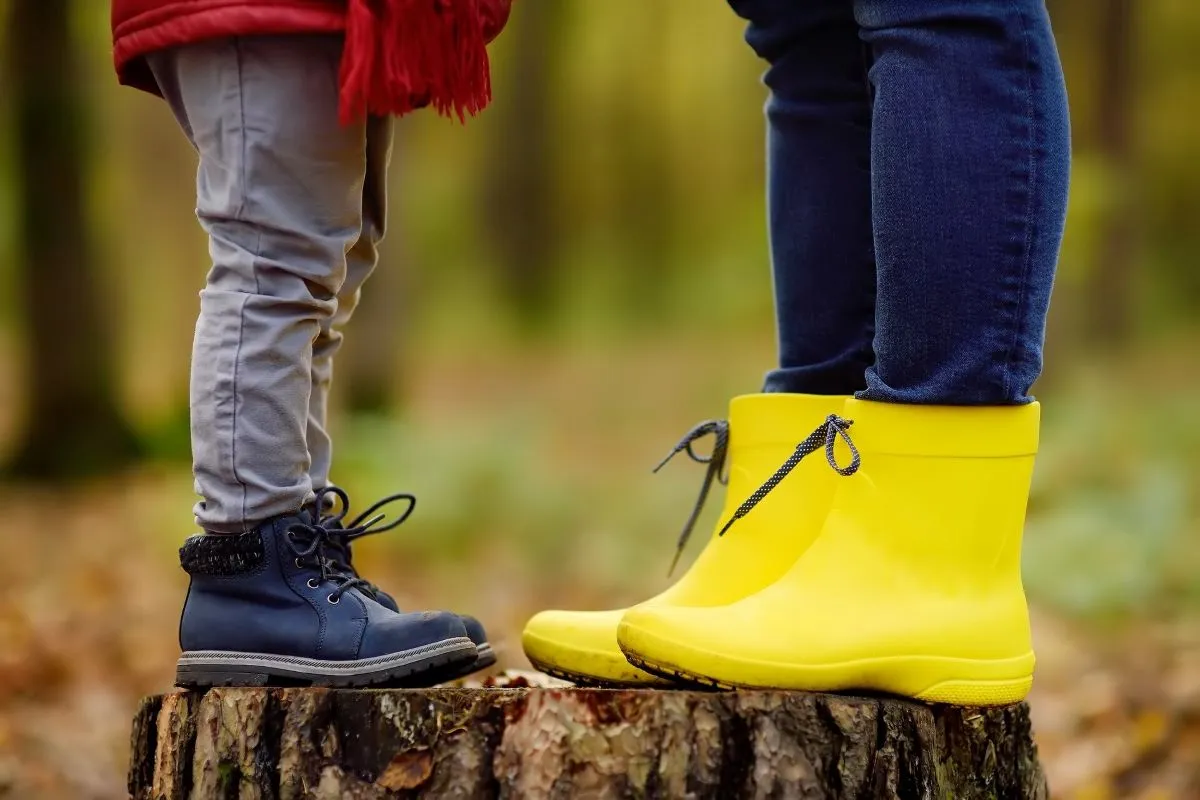
As noted, rain can be a problem in Alaska. Even a quick rain shower can soak through pants and shoes. No one wants to spend a day in wet clothes, especially on their dream vacation.
A waterproof or at least water-repellent outer layer is key to staying dry. For milder weather, a raincoat or windbreaker can also work. A good rain hat is much better than an umbrella, especially when walking in crowds.
With rain comes some unwelcome Alaska critters, including insects- specifically mosquitoes. Alaska has 35 species of mosquitoes, and some areas like Denali National Park are famous for them. Regardless of your itinerary, you will want to use DEET or a similar alternative in addition to covering your arms and legs. Additionally, lightweight, long-sleeved shirts and pants can be a great tool to prevent nasty bug bites.
Sunny skies and UV rays

Even though rain and cold are pesty conditions, sunshine is also something to plan for. Remember, summer months, especially those closest to the equinox, can result in many hours of sunlight. This, coupled with ice-covered glaciers and snow-covered mountains, can make Alaska a bright environment.
Even with cooler temperatures, the sun and its harmful UV rays can damage skin and eyes. Even in milder temperatures, it is entirely possible to get sunburned. A hat and sunscreen go a long way toward preventing unnecessary burns on your face.
It may be surprising to some, but sunglasses are important when heading to Alaska. Not only for sunny days but glaciers and snow can reflect light, making it incredibly bright for your eyes. A good pair of glasses will help protect them. Don’t forget about kids; they also can benefit from sunscreen and appropriate eyewear.

